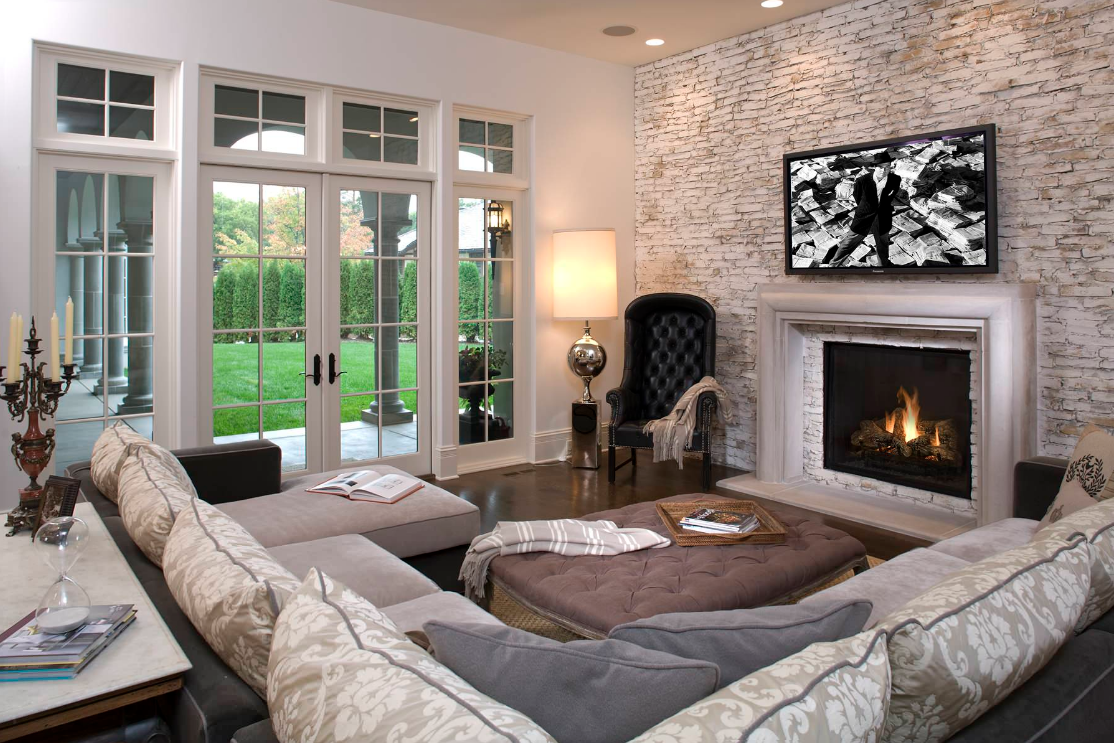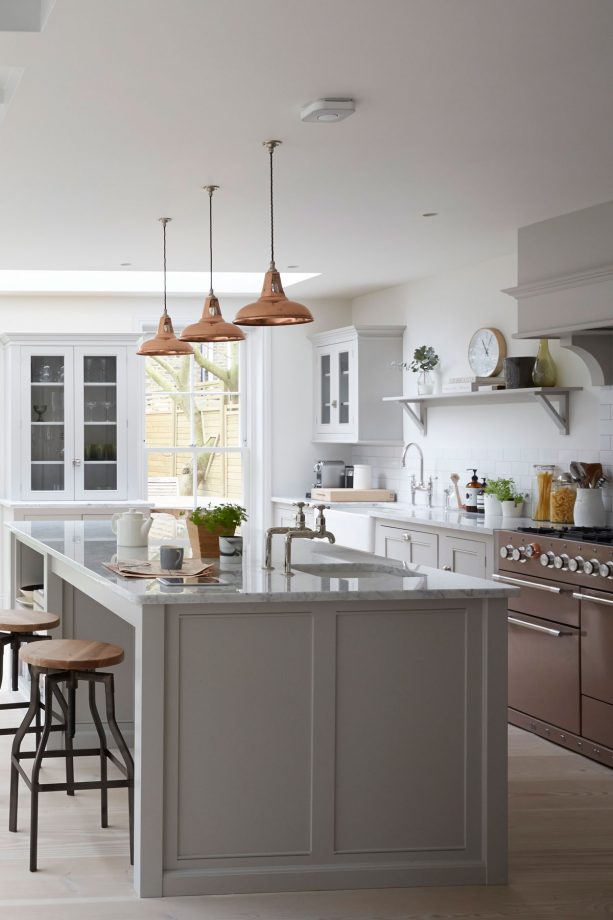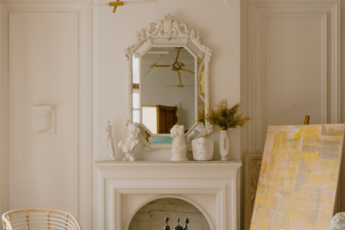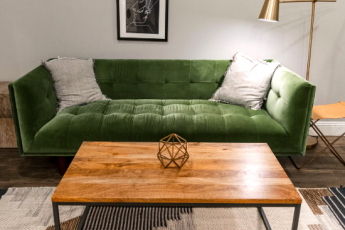Making Technology Look Great in Your Home

How do you feel about bringing technology (and all the styles that entails) into your cozy home? It can certainly not pose a problem to many homes, especially those with a modern or minimalist aesthetic, but that’s not for everyone!
 Photo By: John Kraemer & Sons
Photo By: John Kraemer & Sons
Sometimes you want a bright and colorful design scheme that can clash with the average gadget or device that comes out, and sadly there aren’t as many customization options for your router as there are for your smartphone (although thankfully that trend is slowly decreasing).
That doesn’t mean that technology isn’t necessary. If you’re going to have it, however, you might as well make the most of it, which is precisely what we’re here to help you with. While we don’t want to tell you exactly how to organize your home and technology (you consider every layout a series of suggestions and ideas instead of a template), we hope these general tips and principles will help:
It’s All About Context
Any home decorating can look good in the right home with the right surroundings and context, and that extends to technology. You should try considering the look of a device before you buy it, and while we wouldn’t recommend picking an inferior product just based on looks, you can certainly check out color schemes, different designs, and if you can do anything to change the surrounding furniture. We aren’t saying you should repaint the room for the sake of a modem, but an easy fix is often just a minute of thought away.
You Can Absolutely Decorate and Customize Your Devices
On top of the different and fun designs, you can sometimes but not always choose from when it comes to your devices in terms of casings, plating to add on, or covers or skins for them. If even these aren’t available, then perhaps some DIY decoration might be in order. A little bit of well-considered paint or stencil designs on your tech can make an average device a comfortable piece of your home, and the only limit is your creativity. They’re your devices, and while you might want to check the warrantee, how often do you use those in the first place?
Some devices do give off a reasonable to heavy amount of heat, in which case you will want to make sure that you aren’t putting anything on or near them that can block air flow, nor using anything on them or near them that could cause a fire or toxicity hazard. Naturally, as with many things, careful reading and smart thinking are key.
Wires Are the Worst
There’s nothing inherently ugly about a lot of the devices out there on the market, even ones that have a design that clearly isn’t meant for you. However, there is absolutely something unsightly about gadgets strewn about the home and wires that are clearly poorly managed, just looking like they’re going to trip someone up and cause a minor catastrophe.
Even the least design-oriented and most plugged in people can learn about effective cable and wire management, and there are plenty of tools that can bundle wires together to provide a polished look to your home, even if those wires still have to be out in the open. Furthermore, wires can be carefully lined along walls to stay out of the way, or otherwise worked in a way where their presence is minimized. As long as it appears deliberate, whatever you do is better than nothing.
Additionally, going wireless where possible is often an option, and while you might pay a premium for some devices (you’ll have to decide for yourself if its worth it), you often make up for the extra cost in convenience alongside aesthetics. Every device will be different in this regard, so don’t constrain yourself to a hard and fast rule for the sake of your bank account. We do, however, recommend it for the devices you’ll use the most and will have a prominent place in your home.
Placing Gadgets Large and Small
Additionally, are you worried that your television will clash with the rest of your space? What about gaming consoles that can appear sleek and modern in an otherwise homey space? There are still solutions. The right TV stand or cabinet can make all the difference and hide away items when you aren’t using them, or otherwise create the right environment for them. If you’re looking for something more unique, even large TVs can have beautiful designs around them or covering them up when not in use.
And what about the smaller gadgets? The headsets and flash drives, mice, flash drives, and so on? They can all have a place too. A bit of good tidying protocol can go a long way, and a philosophy of minimalism can make sure that you aren’t cramming things into drawers after which you’ll never use them, and instead better appreciate the few cool items you do have. We certainly aren’t against technology, but chances are you don’t need so much, given the multiple uses of everything that comes out these days. A simple question: what can everything you own do that your smartphone can’t?
If you’re still having trouble finding a place for everything, you might want to invest in a nice container or space of your choosing and use it to boost your organizational capabilities.
Make It Feel Like It Always Was or Should Be There
While we touched on this before, we would like to reiterate that technology shouldn’t feel like an invader to an otherwise pristine space. In a best-case scenario, any technology should feel like it was always there, and any table or space that has it should seem empty without it. You can certainly experiment with different setups and move things around so long as it doesn’t interfere with your usage (more on that soon).
Ways to make this happen more easily are to match or complement colors when possible, clean regularly (working technology often attracts excess dust), and trying not to overstuff spaces with too many items.
Practicality First
For all the advice and design considerations we’ve brought up here, you do need to put practicality first. If something isn’t going to work as properly as it could due to a design choice, then you should scrap that design idea. Don’t force yourself to use something at the wrong angle or feel cramped. Just as how proper social etiquette should make things easier instead of unnecessarily complicated, good design should complement the natural purpose of what you have while remaining aesthetically pleasing.
Similarly, you shouldn’t have to go terribly out of your way to enjoy what you have. If you want to make sure you can turn on the tv and lay on the couch in a matter of seconds, make that your priority and improvise around that one principle. You (and your family) are the master of your space, and the person that’s going to see it the most. A lived-in feeling can go a long way when considering the charm of a home.
Conclusion
There’s no escaping needing some elements of modern technology in your home. Yet that doesn’t mean consigning yourself to unsightly elements and a mess of wires and mysteriously appearing accessories and dongles throughout your home. With just a bit of forethought and good design, you can incorporate everything to make it appear as though it has always belonged and will be there for years to come. No matter what you’re home looks like, we wish you the best of luck and hope that you’ll continue to find joy in design.









Leave a Comment